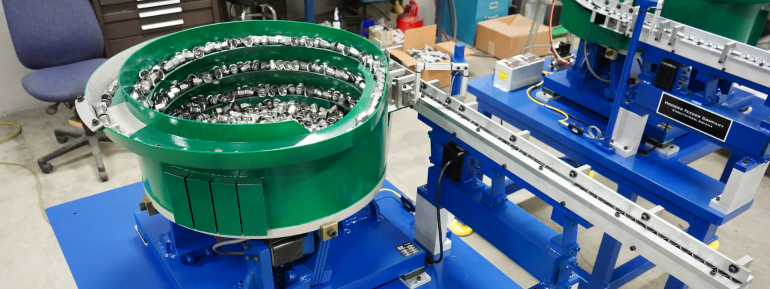A Critical Step to Quality Vibratory and Centrifugal Feeder Implementation
Building a house without a blueprint is foolish. Building a parts feeder system without up-front research and development (R&D) follows the same off-kilter logic. Without a plan – or in this case, without any research – you’re stumbling through the dark.

How do you know if the system you want to build will solve your problems? Below are some of the main reasons why it’s important to complete R&D prior to machine build:
- Evaluation – R&D allows you to weigh the pros and cons of feeder systems and how they can impact your business. Do you need a centrifugal feeder or vibratory feeder system? R&D can show you the way.
- Experimentation – With R&D, a feeder system company can explore a wide range of concepts early in the development process with limited capital investment from the customer. Early testing often saves money down the road.
- Refinement – How convinced are you in the concept of a proposed feeder system? R&D enables you to refine design and process before the system is fully built.
- Efficiency – R&D provides information up front that limits expenses, such as buying components you may not need. You can also identify any major issues early in the process and reduce potential waste. Each party has the opportunity to create a wish list of how they envision the machine. Testing limits the potential downstream costs of unexpected changes and maximizes efficiencies.
- Contingency – Solid R&D allows you and your vendor to formulate contingency plans should obstacles arise during the feeder design process. You’re both looking for ways to limit risk, which is another reason why R&D is so valuable.
- Commitment – Completing the R&D phase is a way for the customer and the vendor to highlight their commitment to a project. The customer sees the vendor is invested in helping to solve problems and the vendor receives confirmation their efforts are for a long-term contract.
Has R&D testing been part of your feeder system design and development process in the past? Click here to learn more about why we place so much value in our process.
August 5, 2016
Related Topics: Vibratory Feeders, Centrifugal Feeders